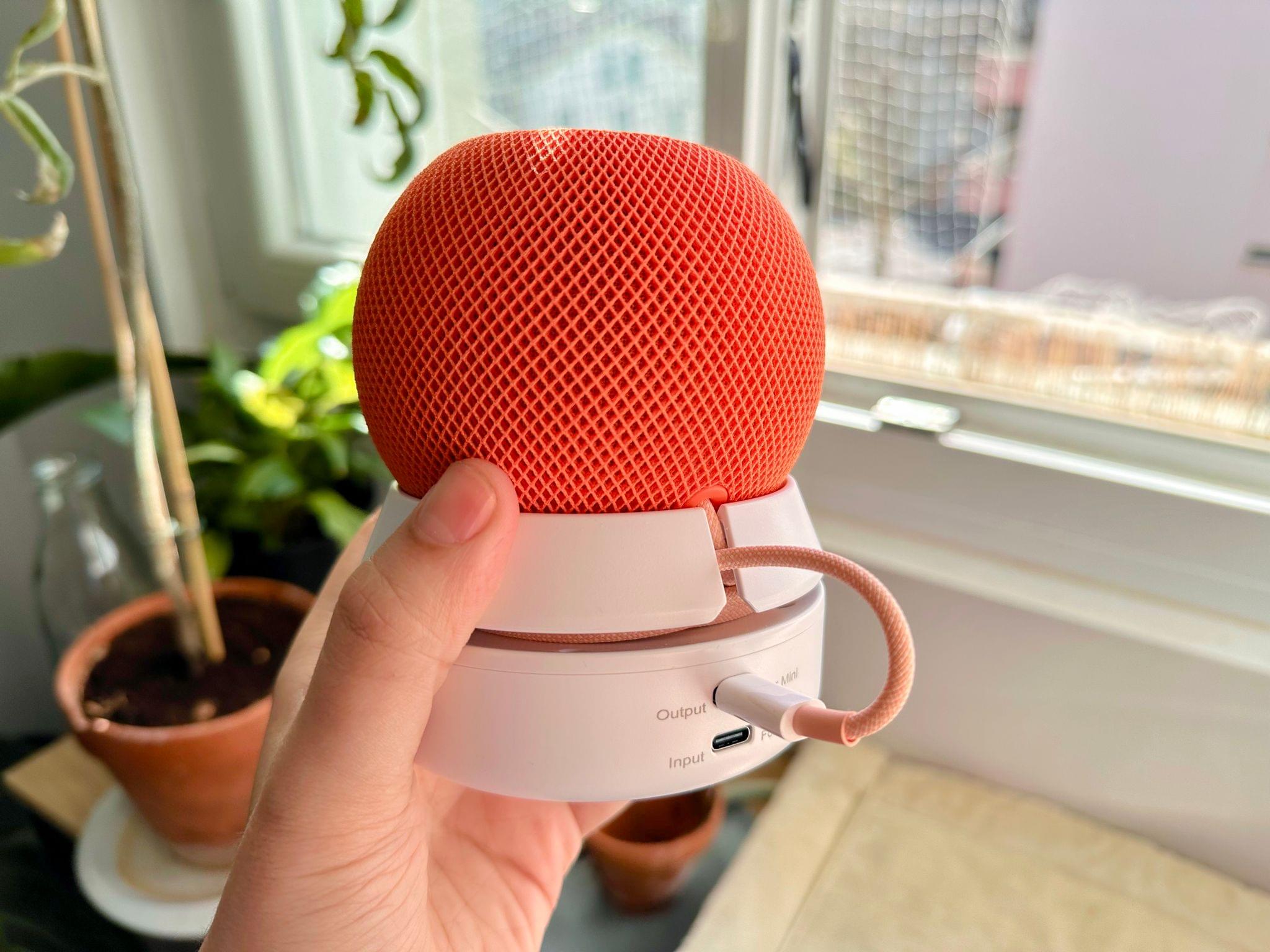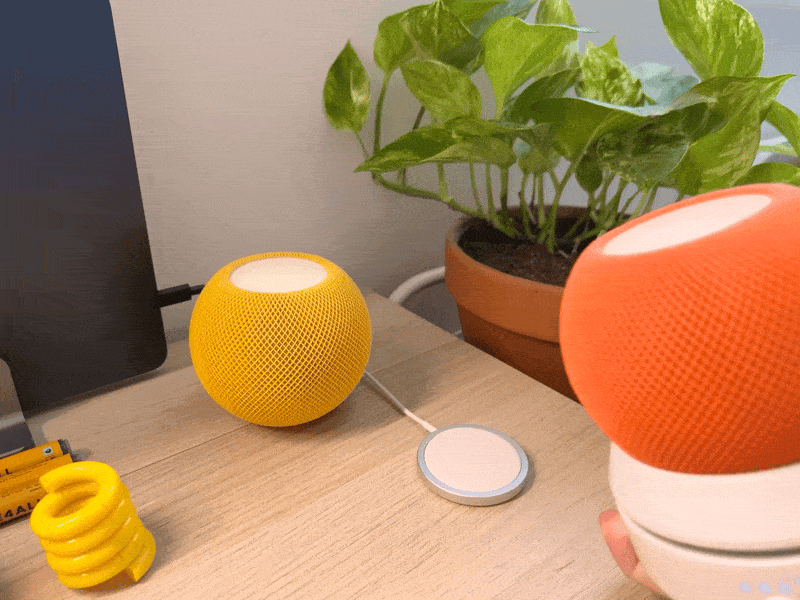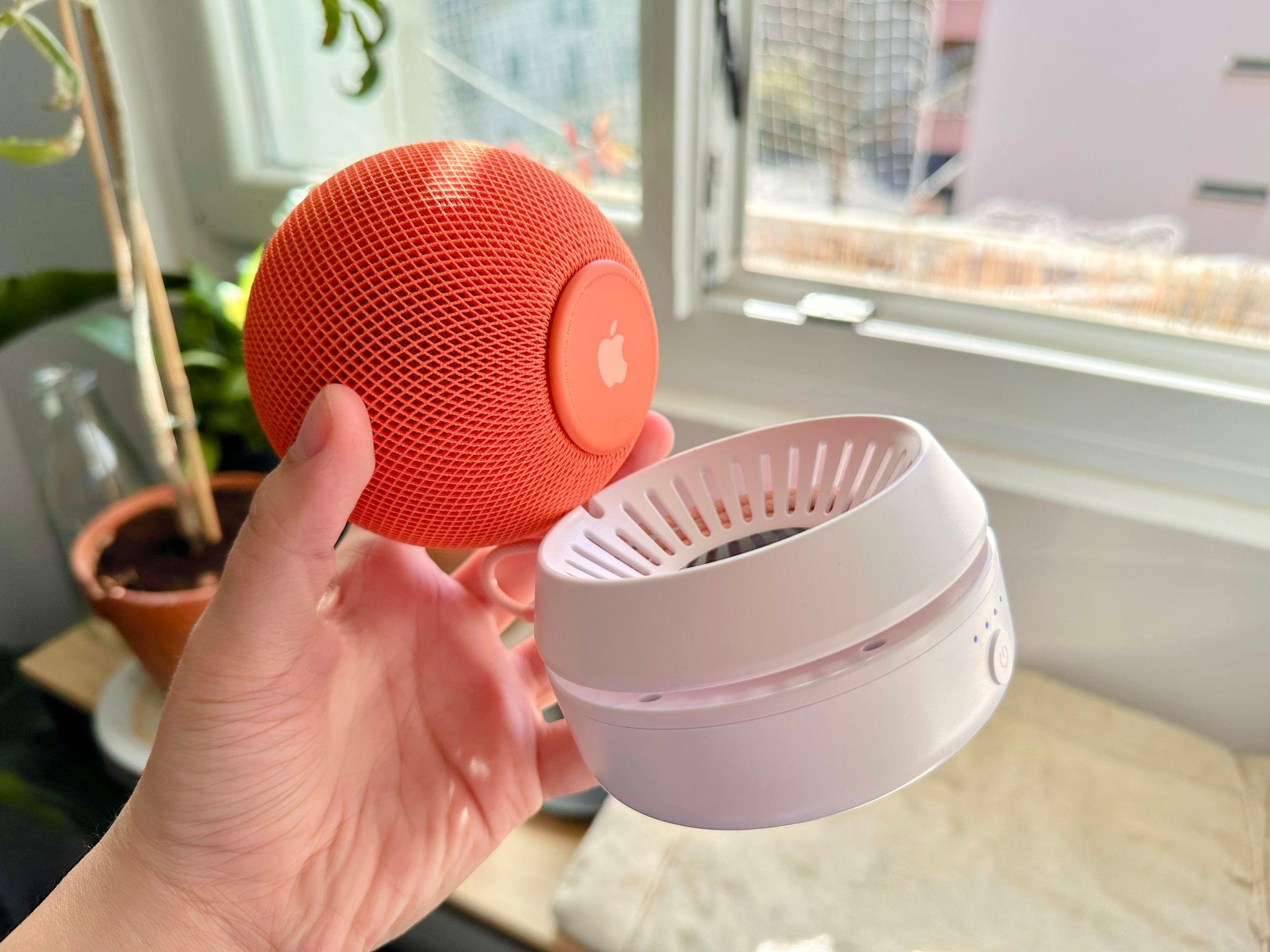A couple of months ago, my partner and I were contemplating purchasing a Bluetooth speaker for the bathroom. We both like to listen to podcasts and music while in the shower, and using our iPhones at maximum volume outside of the shower booth was getting old.
Here’s the thing, though: Bluetooth speakers aren’t great. I tried a bunch of small portable Bluetooth speakers. The JBL Go 3, in particular, was pretty good. It has a decent sound, it’s small and easy to move if we want to use it in other rooms, and it’s waterproof. Unfortunately, when it comes to connectivity, the JBL Go 3 was no exception in the sea of similarly-priced portable speakers: you often have to re-pair your iPhone, and that becomes especially painful if you’re sharing the speaker with your partner like I am. I really didn’t want to go back to this life of spending two full minutes to pair my iPhone every time I’m headed for the shower. We would only end up giving up on it and going back to blasting our iPhones at maximum volume.
In the end, I had a suggestion for my partner: what if we used a HomePod mini instead?
We’ve been pretty happy with the four HomePod minis that we own. We use two as a stereo pair in the living room with the Apple TV, one in the kitchen, and one in the bedroom on my desk, so it would make sense to get one more for the bathroom. The HomePod mini already has everything we need: a decent sound and great connectivity with our iPhones. No daily pairing needed.
Unfortunately, after thinking about it for more than two minutes, I realized that it was probably a bad idea with our particular bathroom setup. It’s a compact bathroom, and we only have one available wall plug… near the sink. Setting up a HomePod mini there permanently would be an accident waiting to happen.
As a result, here’s what I concluded: I wanted to be able to move one of our existing HomePod minis around the apartment, so I could occasionally plop it down in the bathroom when taking a shower (at a safe distance from the sink) and simply move it back to where it belongs when I was done. Sadly, though, Apple’s HomePods are wired only.
But then, I remembered Federico mentioning on Connected back in July how he turned one of his HomePod minis into a portable speaker using the $69.99 PlusAcc Battery Base. I ordered it, we’ve been using it in our apartment for the past few weeks, and I am now convinced that Apple should be making this product, a portable HomePod mini. I even have the perfect name for it: RoamPod. (You’re welcome, Apple.)
The battery base is super easy to set up. Apart from its plastic enclosure, which is specifically molded to fit a HomePod mini and its cable, it’s a really basic object. The only tech inside is a 10,000 mAh battery, a battery level LED indicator, one USB-C port to plug the HomePod mini in, and another to plug the battery base into the wall to charge it. The result is a bottom-heavy HomePod mini that you can just unplug, pick up, and move around your space as needed.

On the back, the battery base has one USB-C port for the HomePod mini’s power cable and another to charge the battery base.
Now, when I head off to the shower, I can just start playing music on the RoamPod by approaching with my iPhone, unplug the battery base from the wall, pick it up, and take it with me to the bathroom. If you live in a house with a garden, I can only imagine the joy of using the RoamPod to listen to some music outside while basking in the sun.
Don’t get me wrong; I fully realize that the end result is not a revolutionary product. It’s basically just a portable speaker with the added benefits of Siri and good software integration with Apple devices. But hear me out, because I think there are four ways that Apple could turn the RoamPod into an even more appealing product:
Hand off playback between HomePods. What if, if Apple made its own portable HomePod mini, it leveraged an Ultra Wideband chipset inside for nearby interactions? The RoamPod could have a special feature that would allow you to hand off playback between two RoamPods simply by tapping them together. This would work exactly the same way as you can currently bring an iPhone nearby to hand off audio to a HomePod.
Create and undo stereo pairs on the fly. One of the HomePod mini’s greatest features is the option to combine two of them and create a stereo pair. This is how we use our HomePod minis in the living room. Stereo makes them sound amazing for their small size and for their price. So, still building on the idea that Apple could leverage an Ultra Wideband chipset inside, you could imagine a scenario where you would be able to set a RoamPod down next to another, tap them together, and immediately create a stereo pair on the fly. As soon as you moved them away from one another, they would each go back to their single-speaker mode – no fiddling around in the Home app’s settings necessary.

What if you could tap two HomePods together to hand off playback or create a stereo pair? This is the portable HomePod future I want.
Make it dust- and waterproof. Obviously, I’m writing this because I want to be able to use the RoamPod in the shower. So, if Apple made this product, I would really want them to make it waterproof. But it would also make a lot of sense for the various use cases that a RoamPod could fit into. I know many people like to take their portable speakers to the beach, the park, or even the poolside. A portable HomePod should definitely be waterproof (and dust-proof, too) to truly make it the ideal outdoor product, even if that means ditching the fabric material for its outside shell.
Ship it with a magnetic base. Just like Federico, Apple loves to add magnets to their products, and the RoamPod should be no exception. The reason why I love MagSafe accessories is how easily removable they are. The same can be said for Apple’s Magic Keyboard for the iPad, which makes it super easy to take the iPad off the keyboard when you want to switch between tablet and laptop mode. If Apple made a RoamPod, they should absolutely ship it with a stationary magnetic base, just like Sonos does with their rather expensive Move 2 portable speaker. You would be able to keep the base plugged in at all times, pick the RoamPod up when needed, and easily put it back on the base when it needs charging, or when you just want to use it as a regular, stationary HomePod.
When you think about it, it’s quite surprising that this product isn’t already being sold by Apple. Complete with the AirPods and the HomePods, the RoamPod feels like an essential subcategory of audio products that Apple would have a lot of success venturing into. The fact that you can already get a taste of this experience by plugging the HomePod mini into a small battery suggests that this potential product isn’t that far-fetched at all.
It’s certainly worked out for me and my partner. Although we could purchase one of Sonos’ existing portable speakers to fulfill most of these wishes today, we truly couldn’t justify the expense. So, in the meantime, we will keep using our hacky battery base we bought on Amazon for a fraction of the price. And, we’ll do our best to ensure that our RoamPod stays at a safe distance from the sink and our shower splashes.



